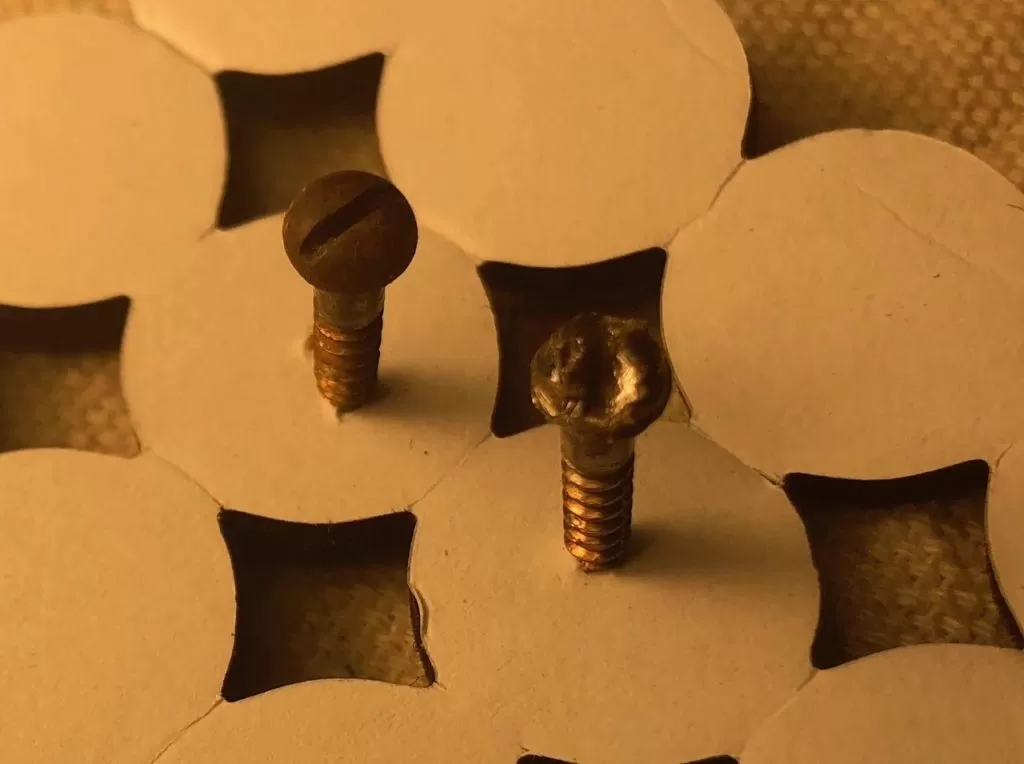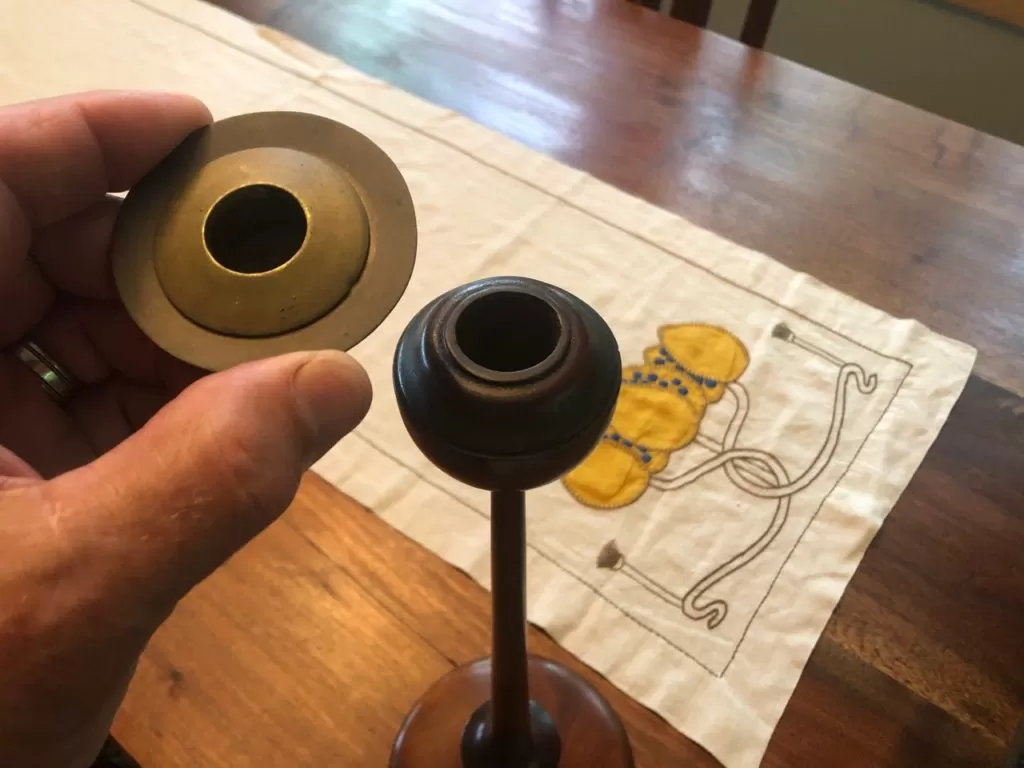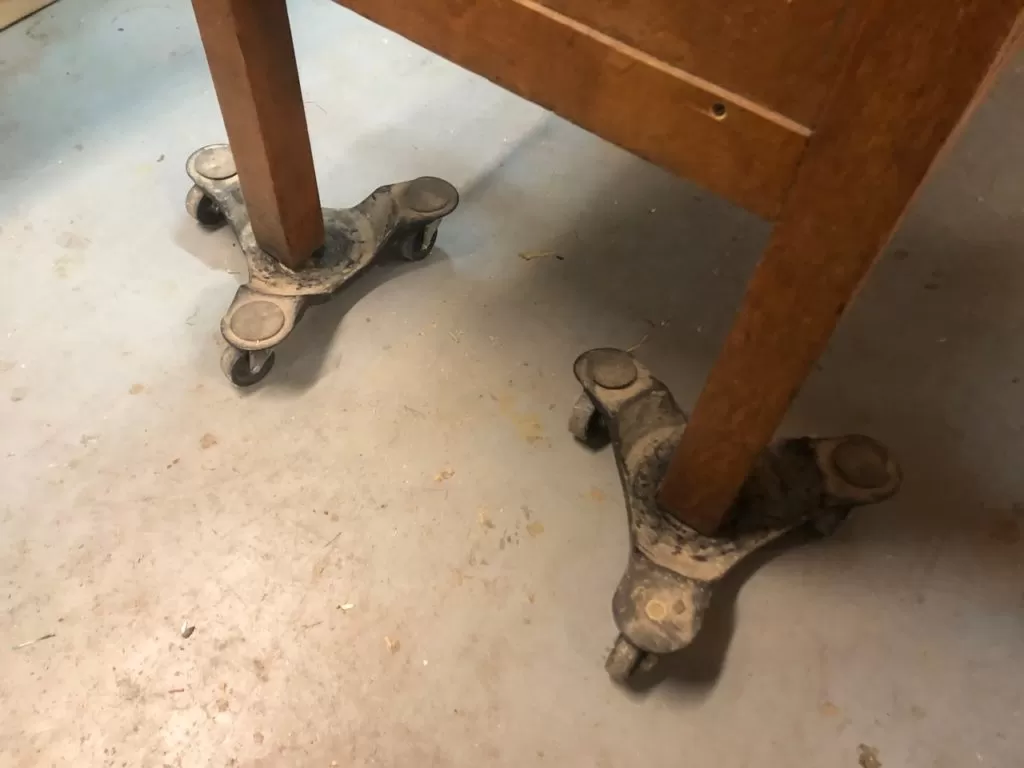An Arts and Crafts Instruction Manual
Last weekend I put aside my furniture projects and started some long overdue maintenance of my two 60” pasture mowers which I pull behind our Kubota farm tractor. When it comes to motors and machinery, I do not have dependable natural instincts, so I have to rely on the owner’s manuals. Unfortunately, sometimes they don’t prevent me from doing something stupid, like thinking that leftover clip which came out of the universal joint wasn’t important.
Wrong.
And so, as I looked longingly over at the Arts and Crafts desk patiently awaiting me atop my workbench, I also thought how unfortunate it is that our Arts and Crafts antiques do not come with an owner’s manual. If they did, you might find some of the following:
Never pick up a piece by the top, especially tables, as the weight of the base can pull out every screw.

Speaking of screws, always select a screwdriver that fills the entire slot. Using a smaller screwdriver will mar the slot and ruin the head, making it impossible for you to loosen or tighten it any further.
When replacing a screw, dip the threads in a can of paste wax or rub them with a candle to reduce the friction between the threads and the wood.

Never trust the glides under a piece of furniture. Original Arts and Crafts glides contain metal that can now mar a hardwood floor. Some modern glides have a nail in the center that when worn down will also scratch a floor or snag a rug.
If you are fortunate to have table leaves that still match your dining room table in color and sheen, use them. If you store them all year in a dark closet, they soon will not match the color of your table, which gradually grows lighter from the bleaching action of sunlight.
Never pick up a lamp by its shade.

Never turn a candlestick over to inspect the bottom without first removing the candle socket and bobeche.
Alcohol, water, and heat can scar an original finish. Use coasters.
Do not use felt to protect the underside of a vase or tile. If the felt becomes wet, the dye in it will permanently discolor the wood beneath it. Instead, use thin cork or non-colored cloth.
After handling silver or copper, wipe the piece with a soft, clean cloth to remove the oils from your fingers, as they can leave blemishes.
Never spray glass cleaner directly onto picture frame glass, as it can seep around the edges and stain the artwork. Instead, spray a small amount onto a soft, clean cloth.

Never drag a piece of furniture, as its own weight can pull the joints apart. If you often have to move a piece by yourself, invest in furniture rollers.
Never trust old wire supporting heavy frames, as it can fray around the eye hooks. And never trust small wall hooks, especially in a previous hole.
Always use 60 watt or lower bulbs in mica shade lamps to avoid scorching the mica. (You can’t read beneath them anyway!)
Have a few of your own to add? Click here to post them on our Facebook page.
Until next week,
“Another flaw in the human character is that everybody wants to build – and nobody wants to do maintenance.” – Kurt Vonnegut
Bruce
